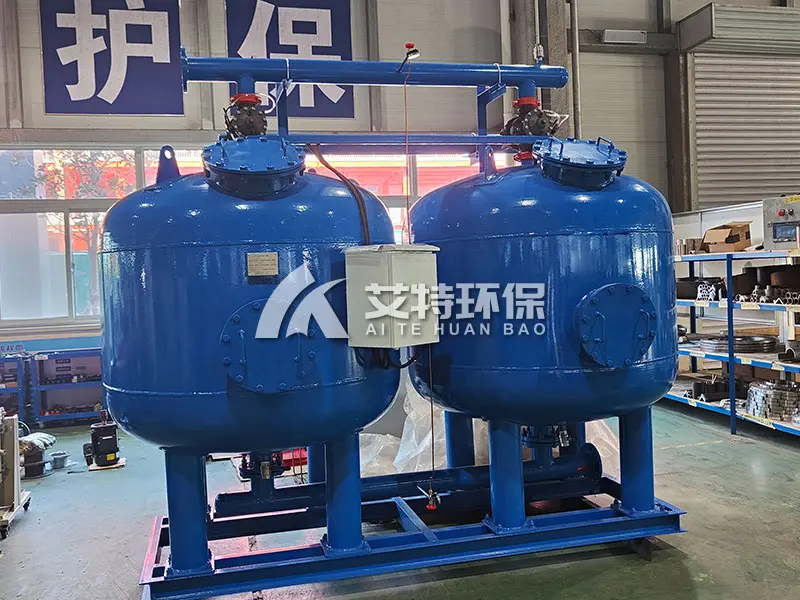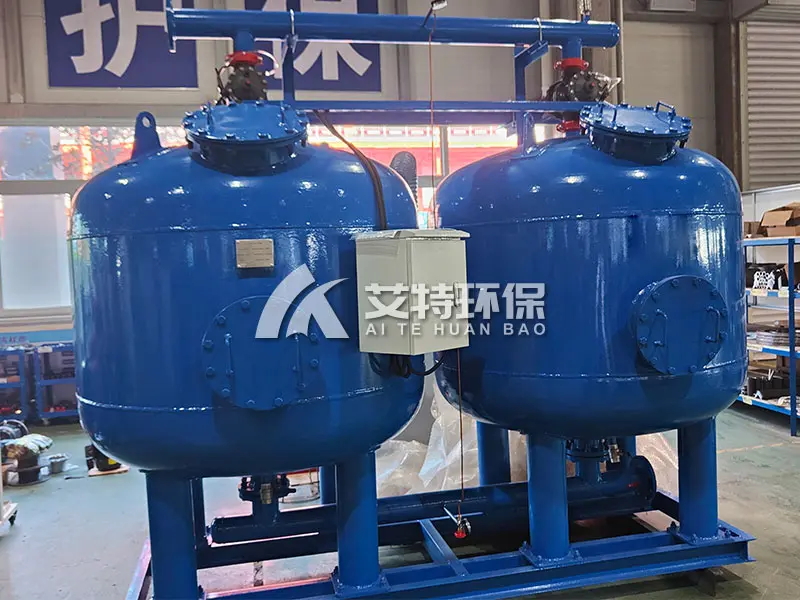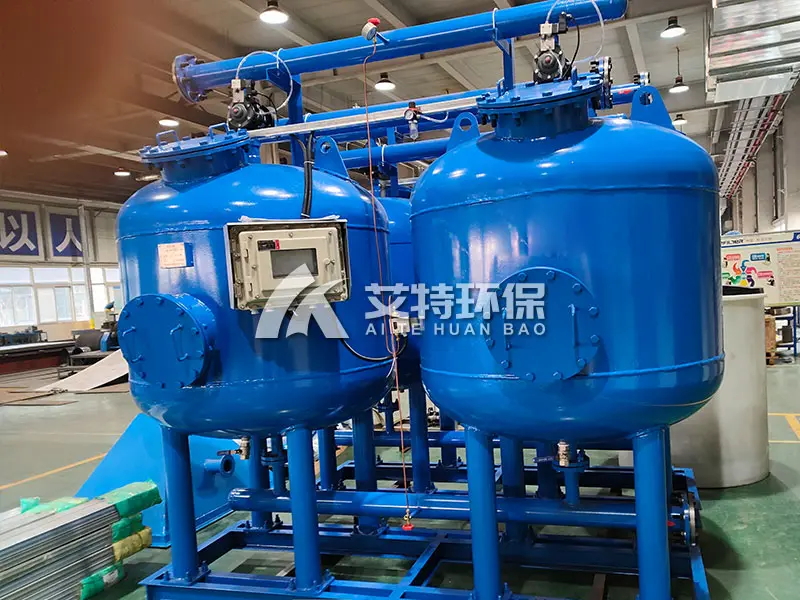Shallow sand filter has many advantages due to its good filtration effect, low water consumption rate for backwashing, automatic control, small footprint, and easy installation. It has been widely used in petrochemical, electric power, steel and other industries, and is good in removing particulate matter and reducing turbidity. It has become one of the mainstream filtering forms.

Filtration state: When the system is in the filter state, the pressurized water flows into the water distribution system from the inlet of the filter tank, and reaches the filter material layer evenly. When the water flows through the filter material layer, the suspended matter is retained by the filter material. There is a water collector with a slit at the bottom of the filter, and the filtered water is evenly collected and flows out of the filter. The gap on the water collector can prevent the loss of filter material.

Backwash state: With the continuous accumulation of impurities in the filter material layer, the pressure loss continues to increase. When the pressure difference increases to a certain set value (or reaches a certain set time value), the system will automatically switch to Backwash status. The pressurized water enters the filter material layer through the water collecting device at the bottom of the filter, washes it, and makes the intercepted pollutants fall off and discharge the filter.

It adopts a fully automatic control filter system, adopts a modular design, and selects multiple filter units according to the flow rate. Backwashing can be started automatically by various methods such as time and pressure difference. Each filter unit in the system is backwashed in sequence, and other units are still filtering. High backwashing efficiency, short backwashing time, and water saving during backwashing.
Previous article: The correct way to replace the air filter cartridge
Next article:When buying a shallow sand filter, how to choose?